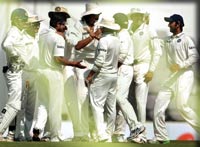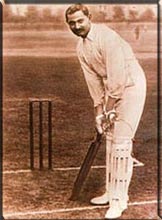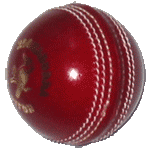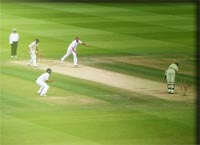Types of matches Test MatchesThe word "Test" initiated with the perception that sports matches played between national representative players were the eventual test of sporting ability. Cricket test matches are the highest form of the sport of cricket and are measured by players and solemn cricket fans. Playing an definitive test match as judged against the one day international cricket is much more exigent and difficult. Test cricket is the top standard of first-class cricket.History of Cricket The first test match took part between England and Australia in 1877, with the conception of the famous "Ashes" trophy in 1882 after Australia effortlessly beat the Marylebone Cricket Club team. Test cricket is roughly at all times played as a series of matches amid two countries, with all game in the chain taking place in the same country. The number of game in a series differs from one to six. India was granted their test status in the year 1932 where the first test match was beside England at Lord's London 25-28 June 1932.India became the sixth team to be established Test cricket status. Code to accomplish Test CricketTest matches among two teams are generally played in a group of matches called a "series". Matches proceed up to five days and a series normally consists of three to five matches. Test matches that are not over and done within the allotted time are drawn. In the case of Test cricket the chance of a draw often promotes a team that is batting last and well following to bat defensively, giving up any slight possibility to avoid a loss and get a win.Playing TimeCricket test competition is played over a period of five days with three sessions of two hours scattered with a 40-minute break for lunch and 20-minute break for afternoon tea daily.
In the early days of the game, Test matches were played over three or four days. Regulation of PlayTo choose which side bats first, aforementioned to the start of play on the first day, the two team captains and the match referee get together at the centre of the wicket for a coin toss. The abode captain will toss the coin, with the vacation captain calling either "Heads" or "Tails" while the coin is in the air.The squad who wins the toss of the coin elects to choose whether to bat or bowl first, and bats either until each batter is discharged or they wish to stop batting, termed a "declaration". There is no boundary to how long they can strike provided, there hang about at least two batsmen who have not been fired. After this the players change position, and the other group does the batting. If the other squad is sacked with a score of two hundred runs or more in the rear of the first team, then the first side has the preference whether to make the other squad bat again for their "second innings" or bat itself to achieve a better lead. The Follow-onIf the follow-on is obligatory, then the first side bats until it is discharged or declares. If this team's entire score from both its innings is less than the other side, then it wins the game. If this is not the case then the other side must bat in its second innings to challenge to score more than the first team. If it is kicked out before this occurs, then the first squad wins the game. If time scampers out before either of the above take place, the game is called a draw.If the follow-on is not imposed or the other team's score is amply large so that the follow-on cannot be obligatory, once this team is fired or affirms, then the first side bats again until it is discharged or declares, or time runs out. If the gain of the first team is less for its two innings as compared to the other side score from its innings, then the other team is the champion. Or else the other team will bat again. If their overall score gets to more than the first team's total, they triumph the match. If they are dismissed before attaining first team's total, then first squad wins the match. If neither side finishes before the planned end of the match, it is a draw. At the closing stages if both teams end up being discharged twice with the same pooled totals, the game is a tie. The New Ball After eighty over's, the captain of the bowling team has the choice to take a new ball. A new ball, which is harder and smoother than an old ball, usually favors' fast bowlers who can make it jump at a greater series of heights and speeds. The roughened, softer surface of an old ball is more beneficial to spin bowlers or those using reverse swing. The captain may wait for the verdict to take the new ball if he wishes to carry on with his spinners but most regard the new ball as a chance to bring in new life into the bowling and more probability of taking wickets. Last part of the GameA Test match may end in one of seven circumstances:
Test cricket groundsThere are copious world-renowned cricket stadiums sited in India. The majority grounds are under the management of various State Cricket Boards as conflicted to being under the control of the BCCI. The Bombay Gymkhana was the first ground in India to host a full-blown cricket match attributes an Indian cricket team. The initial stadium to congregate a Test match in India was moreover the Gymkhana Ground in Bombay in 1933, the only Test it ever hosted. The second and third Tests in the 1933 progression were horded at Eden Gardens and Chepauk.The Feroz Shah Kotla in Delhi was the first stadium to mass a Test match after independence, a draw in opposition to the West Indies in 1948, the first of a 5-Test series. Nineteen stadiums in India have crowded official Test matches. In up to date years, there has been a boost in the number of world-class cricket stadiums in India, with manifold Test venues in Lucknow, Chandigarh, Chennai and Mumbai.  The Bombay Gymkhana hosted the foremost ever test match in India, the only test it has swarmed to date. Wankhede Stadium, well-known in 1974 it has an ability to hold 33,000 audiences are currently the most popluar spot in the city. It has massed 21 Test matches. It was off the record heir of the Brabourne Stadium, which is also located in Mumbai. Mumbai is often well thought-out the cricketing capital of India for the reason that of its fans and the endowment it produces and thus the stadium frequently hosts major Test matches. The M. A. Chidambaram Stadium in Chepauk is also measured to be a significant historical Indian cricket ground, conventional in the early 1900s it was the spot of India's first Test victory. |

Home >
Games >
Cricket >
Types of matches
Common Games Of India || History Of Games& Sport || Pre School Games || School Games || Games For Girls & Women || Team Games

